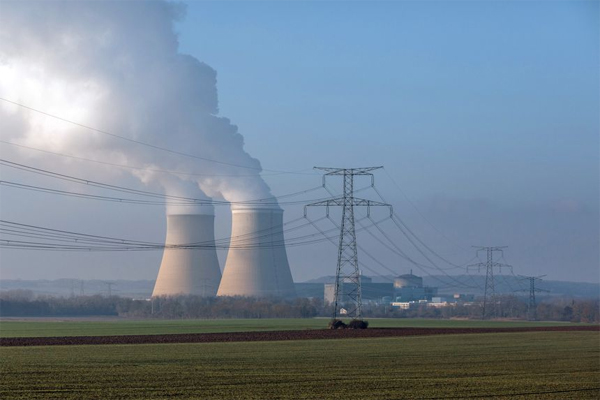The EU admits nuclear and natural gas are part of the energy solution.

the Nogent nuclear power plant in Nogent-sur-Seine, France, Dec. 21, 2021.
Photo: Cyril Marcilhacy/Bloomberg
WSJ Editorial Board
NEW YORK
EnergiesNet.com 01 04 2022
Could this winter’s energy crisis be shocking Europe into climate realism? Believe it or not, the European Union is set to include nuclear and natural gas on the list of industries eligible for “green” investments. Someone please pass the smelling salts to the Sierra Club.
At issue is the so-called taxonomy for classifying environmentally sustainable investments. This new list is intended to create a uniform definition of activities that qualify as green for corporate disclosures, climate-oriented investing, and carbon-related government spending. The Brussels green list represents the largest regulatory effort to date to pin down what “sustainable” means in relation to finance.
Wonder of wonders, nuclear and natural gas make the cut. The draft taxonomy released late on New Year’s Eve deems investment in nuclear power sustainable as long as the investment is made before 2045 and a plan is in place to dispose of the waste. The draft also includes natural-gas power plants built by 2030, subject to emissions limits and as long as they replace heavier-emitting plants.
The usual suspects are furious for the usual reasons. Berlin lobbied hard against including nuclear energy on the permitted list. That’s the same Germany where households and businesses pay some of Europe’s highest power prices while the government shuts down the country’s remaining nuclear plants, pursues expensive renewable boondoggles, and burns more coal. Some greens bristle at including any fossil fuel on the list.
The critics are partly right that politics is at play. France, which relies heavily on nuclear energy and where the nuclear industry is an important employer, lobbied Brussels to include that power source. Other European countries lobbied Brussels so they could continue investing in natural-gas power.
This is that rarest of cases in climate policy where the politics aligns with energy reality. If environmentalists mean what they say about the urgency of cutting CO2 emissions, nuclear is the only widely available power source that’s zero-emitting and more reliable than wind or solar. In a world far from ready to wean itself off fossil fuels, natural gas stands out as much lower emitting than others. The growth in natural gas to account for about one-third of United States electricity generation in 2019 helps explain the roughly 14% decline in gross CO2 emissions since the mid-2000s.
In a smarter world, the market would have been allowed to figure this out. The new EU taxonomy still represents a destructive form of winner-picking industrial policy and has flaws. A big one is the arbitrary time limit on investments in nuclear and gas plants.
But at least Europe is correcting some of the errors of its last generation of green industrial policy. Ending the regulatory bias against natural gas in particular will balance the scales after subsidies and mandates for renewables made natural gas uneconomical and steered investment toward cheaper but dirtier coal.
All of this has implications for the U.S., where the Biden Administration is still fantasizing that solar and wind power can soon replace all fossil fuels. If Europe can admit the truth, how about the White House?
WSJ Editorials are written by the The Wall Street Journal (WSJ) Editorial Board. The Board speak for free markets and free people, the principles, if you will, marked in the watershed year of 1776 by Thomas Jefferson’s Declaration of Independence and Adam Smith’s “Wealth of Nations.” So over the past century and into the next, the Journal stands for free trade and sound money; against confiscatory taxation and the ukases of kings and other collectivists; and for individual autonomy against dictators, bullies and even the tempers of momentary majorities. Energiesnet.com does not necessarily share these views.
Editor’s Note: This article was originally published by The Wall Street Journal (WSJ), on January 04, 2022. EnergiesNet.com do not reflect either for or against the opinion expressed in the comment as an endorsement of Petroleumworld or EnergiesNet.com
Use Notice: This site contains copyrighted material the use of which has not always been specifically authorized by the copyright owner. We are making such material available in our efforts to advance understanding of issues of environmental and humanitarian significance. We believe this constitutes a ‘fair use’ of any such copyrighted material as provided for in section 107 of the US Copyright Law. In accordance with Title 17 U.S.C. Section 107. For more information go to: http://www.law.cornell.edu/uscode/17/107.shtml.
wsj.com 01 04 2022




